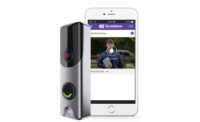Emergency communications systems are being called upon to do more than ever. For years many of these systems, sometimes built into mass communications systems, have included emergency telephones and call buttons — also known as blue light boxes — enabling security or public safety personnel to receive alerts as well as to send them. But some of today’s systems take two-way communications to another level.
Jump to Sidebars
- Selling Emergency Communications
- Emergency Communications in an Unmanned Facility
- Clients Seek Risk Analysis
Despite how it may have been perceived in the past, “emergency communications is not a niche,” observes David Fleming, director of marketing and design for Holland, Mich.-based manufacturer Code Blue Corp.
Security personnel increasingly are focused on layered responses to an emergency that offer multiple forms of communications; and that applies not only on the output side — where clients frequently are using text messages, loudspeakers and other alert methods — but also on the input side.
“It’s the same issue,” comments Samuel Shanes, chairman of Niles, Ill.-based manufacturer Talk-A-Phone Company. “You need multiple layers.”
An emergency phone box helped save the life of a student who was stabbed and whose backpack containing his cellphone was stolen, Shanes says. “He pushed the button in the blue light tower. Otherwise he would have bled out.”
Emergency communications today means not only emergency call boxes but also may include smartphone apps enabling employees to quickly summon help; and mass notification systems that can communicate interactively with smartphones, thereby providing vital information to security and emergency responders to help them assess and address the situation.
Some integrators also are enhancing the value of emergency communications by integrating video or other capabilities with them. And they’re creating new roles for intercom systems in securing businesses, schools and the like, using the systems to lock out potential intruders and instigate other security measures.
Smartphone Apps Help Protect Employees
People who need to reach emergency personnel in a campus environment could use their cellphone to do so. But they may not know what number to call — and dialing it takes time. Using a blue light phone is one option. But some manufacturers offer another option as well: a smartphone app that includes a button to connect the person directly with security.
An app from Pittsburgh-based Metis Secure Solutions, a Mircom Company, for example, works in combination with the company’s emergency call box and uses mobile data service for communications. As Metis Engineering Manager Dave Hochendoner explains, “It connects directly to our server.”
The app uses global positioning to determine the caller’s location and automatically displays it on a map, enabling security or emergency personnel to promptly respond to the caller. Personnel also know the caller’s identity through information programmed in by the client or by individual users at the time they install the app.
Depending how the system is set up, callers also may be able to share video from their smartphones with emergency personnel.
The Metis smartphone offering is licensed to clients based on the number of users. Users get an access code enabling them to download the app from an app store.
Interactive Emergency Communications
Sending text messages to smartphones is also becoming an increasingly important aspect of mass notification systems — and some of those systems also are gaining interactive communications capability.
Talk-A-Phone has integrated its equipment with that of several manufacturers, enabling security personnel to push a single button to use several different methods to alert those who could be impacted. One of the methods is via smartphone text messages, which also include questions for recipients that they can answer via text.
Shanes cites the hypothetical example of a university with a shooter on a campus. “If you push out a message saying ‘There is a shooter in Smith Hall,’ you can ask, ‘If you’re in or near Smith Hall, push 1; if not push 2.’ You now have a count of how many people there are and you can have first responders in the loop seeing the same information.”
The system can go on to ask which floor respondents are on and whether the shooter is on their floor, Shanes explains. Based on this information, the system also can send text messages to appropriate people to say “Turn off your ringer, turn the lights off, close the door and lay low.”
This sort of capability can be very valuable in a shooter situation because events unroll so quickly, Shanes says. He cites Federal Bureau of Investigation data showing that first responders typically arrive two to three minutes after a shooter and incidents typically are resolved within 15 minutes — usually with the shooter committing suicide or being killed by police.
Integrated Kiosks
Integrating emergency communications systems with other systems can make them more powerful — and emergency call boxes can be at the heart of those integration plans.
Today, customers are looking at help points as more than kiosks, Fleming observes, adding that Code Blue has several conversations every week about integrating its emergency communications systems with equipment from other manufacturers. By integrating video with an emergency kiosk, emergency personnel can see the person requesting help; and the video also can do double duty as a deterrent.
Video also can play a key role in preventing security personnel from creating unnecessary alarm, Fleming explains. He cites the example of a university that received a report of someone with a gun on campus. The person making the report apparently didn’t realize the person was an ROTC student returning a training gun to a supervisor. But in this case, the university was required to report potential threats within a certain period of time of receiving the threat report. If security personnel had been able to look at the reported gun-carrier on video, they might have been able to determine that the person was not a real threat but instead they had to issue an alert, followed by a retraction.
Fleming believes this will be an increasingly important issue moving forward, as the next version of the NFPA72 code is likely to include a definition of timely reporting that many organizations will have to abide by. He sees developments such as this driving the security industry to re-invent emergency communications kiosks as technology hubs providing power and enclosure for video as well as communications equipment.
New Roles for Intercoms
Intercom systems have long offered two-way communications. Recently they’ve also begun to play an important role as a trigger for emergency communications/mass notification systems. To return to our earlier example, a shooter ideally would never be able to get into fictitious Smith Hall — and through intelligent use of an advanced intercom system, integrators may be able to help clients achieve just that.
An intercom system can be the first line of defense during an incident, explains Wayne Henley, account executive for the Education Division for Newburgh, Ind.-based security company SWC-Richardson Technology Systems. The company installed an Aiphone intercom system with built-in camera, access control and relay outputs, setting the system up to trigger a variety of responses if, for example, security personnel see someone at the door with a weapon. In addition to locking the door, the system can trigger a pre-recorded emergency announcement and turn on outdoor lights.
Henley says one school has already benefitted from having this capability. Security was able to lock out an estranged father who was going through a divorce and was believed to have violent intentions.
Helping employees or anyone on their premises feel safe should be an important priority for any client — and integrators can help clients meet that goal by tapping the powerful capabilities of today’s emergency communications systems. n
Editor’s Note: For more information about emergency communications as related to mass notification intelligibility, please see information about Eaton products here.
SIDEBAR: Selling Emergency Communications
The decision to deploy emergency communications and mass notifications is a big one for clients. That means the decision process can be a long one.
The time between when customers first enquire about emergency communications and when they sign the paperwork can be as long as 18 months, notes Craig Dodson, president of Virginia Beach, Va.-based Integrator Mace Incorporated.
One of the things that makes emergency communications a complex sale is that often it is part of a bigger project. But there’s an upside to that, too. As John Mosebar, vice president of marketing for Seattle-based manufacturer Aiphone Corp. notes, an integrator may get called in to bid on an access control system, not realizing that the client also is looking for emergency communications, or vice versa.
“Ask the question, ‘Is this part of a larger project?’” Mosebar advises. “If you don’t know to ask, you could miss something. In today’s world, eight out of 10 projects out there probably have something more than a single solution being specified.”
When designing a security plan for a parking lot or garage, one of an integrator’s first concerns should focus on emergency communications. Making sure parking patrons have simple and accessible contact to security personnel or first responders in an emergency situation is critical.
According to the U.S. Bureau of Justice Statistics, more than 7 percent of crimes against people occur in parking lots or garages. The most common crimes are purse snatching, robbery, carjacking and abductions.
Here are some recommendations for integrators, with special consideration given to the fact that many parking facilities are now unmanned:
- Begin the planning process with an all hazards assessment to identify those areas most vulnerable to criminal attack. This includes remote areas of lots, stairwells in garages, and entries and exits where access gates require patrons to come to a complete stop in their vehicles and often lower their windows.
- Build intercoms into entry and exit pay stations to provide instant two-way audio contact with a security guard or facility operator.
- Emergency towers, wall-mount boxes or flush-mount stations placed in remote lot locations or garage stairwells offer immediate audio assistance to visitors and help authorities assess emergency situations. Some units have built-in cameras, while audio-only models can be integrated with an existing surveillance camera system. By themselves, the brightly lit emergency stations can deter some criminals.
- Emergency call units also have the advantage of being able to broadcast emergency announcements from facility operators or security personnel, as well as remotely unlock emergency exit doors for ingress.
There still may be issues to overcome. Unmanned facilities require calls for emergency assistance to be directed offsite. That can be problematic, since many lots and garages lack telephone lines. In that case, look for network-based emergency communications equipment that can work with Cat 5e/6 infrastructure. The cable can successfully route both audio and video data to a main control room.
From there an integrator can create an IP network to send the voice and video data to a command center for review and possible action. — Contributed by John Mosebar, vice president of marketing, Aiphone, Bellevue, Wash.
Richard Conner, marketing director for Northford, Conn.-based manufacturer Silent Knight, Fire-Lite Alarms and Honeywell, has noticed an important trend recently.
“We’ve seen a lot more requests for emergency communications systems and a lot more inquiries about how to perform a risk analysis,” he says.
The purpose of a risk analysis, Conner explains is “to understand what the risks are for a facility and then determine the potential impacts and develop a strategy to prevent, mitigate or respond to hazards or risks.” A good risk assessment has four key elements, he adds: identifying hazards, determining their impact, categorizing each hazard according to how severe it is and developing strategies to prevent, mitigate, prepare, respond and recover.
In the fire alarm world, the NFPA has already done much of this work and, based on that work, created codes that detail what integrators need to do in various situations, Conner notes. But it’s not so cut-and-dried on the emergency communications side, he says. Fire protection engineers are well qualified to conduct a risk analysis, and he advises integrators to consider establishing a relationship with a fire protection engineer who can either conduct a risk analysis for a client or review one that has been conducted by the integrator.
“It’s not going to be done in a vacuum,” Conner says. “You’ll involve the local authority having jurisdiction, the facility owner, the maintenance staff, and emergency responders.”













